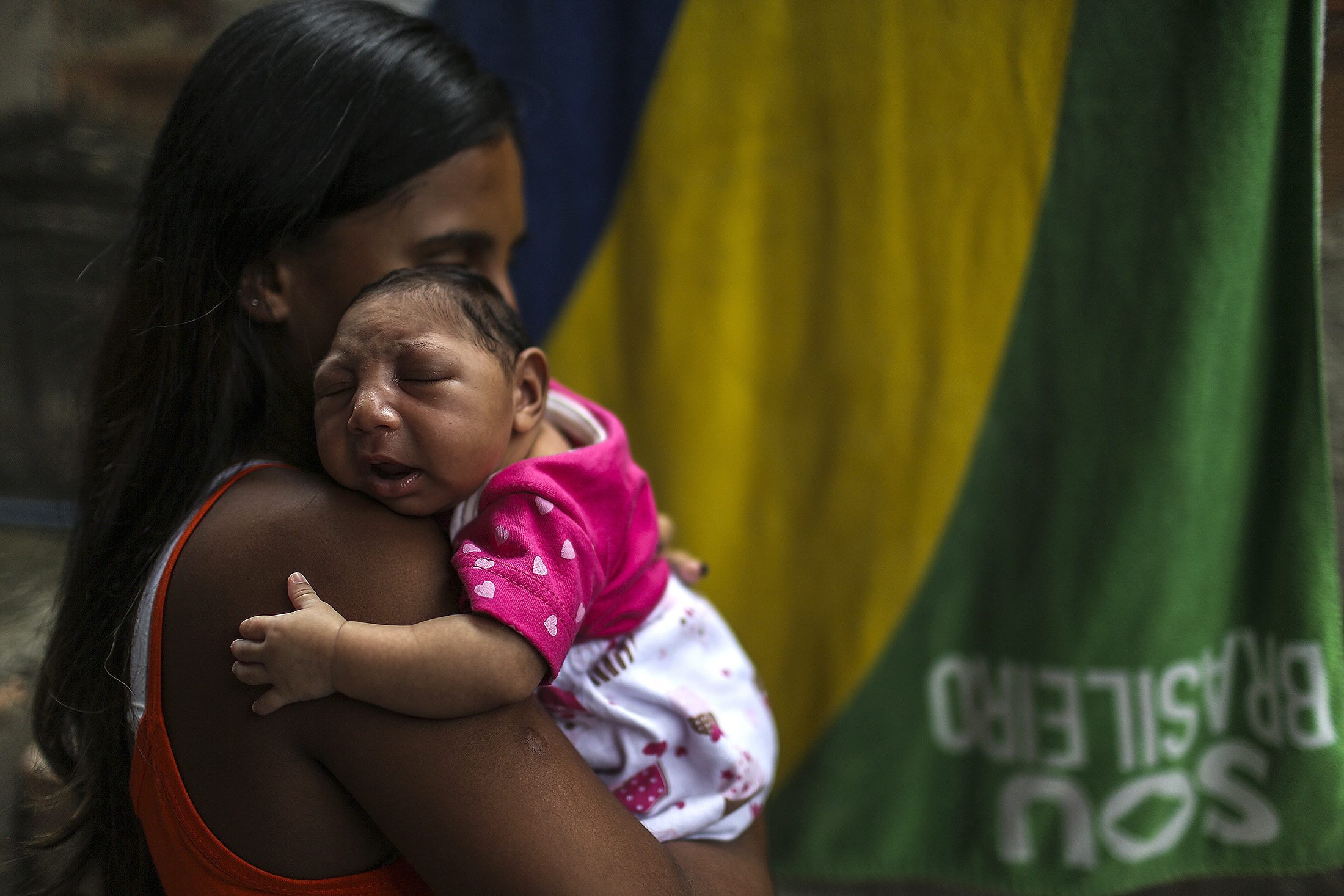The Pathogenic Horror of Anecdotal Reality
"Doctors, pediatricians, neurologists, they started finding this thing we never had seen."
"Children with normal faces up to the eyebrows, and very strange heads. The doctors were saying, 'Well, I saw four today', and, 'Oh that's strange, because I saw two'."
"They cried, they breast-fed well. They just didn't seem to be ill. The pediatricians were saying, 'We've never seen anything like this. These kids are different. This is something new'."
"I'm more comfortable now [that researchers are being involved and a way sought to destroy the mosquitoes]. I see so many people working as a team and so much international concern. Now it has become clear to the whole world."
"If we had known what was going on, that would have been one thing. But there was no book to follow. We had no map. I couldn't sleep for several weeks."
Dr. Celina M. Turchi, infectious diseases researcher, Oswaldo Cruz Foundation, Brazil
 |
| Leticia de Araujo holds her daughter, one-month-old Manuelly Araujo da Cruz, who was born with microcephaly after being exposed to the zika virus during her mother's pregnancy is seen here, in Rio de Janeiro, Brazil, Feb. 11, 2016 -- Antonio Lacerda/EPA |
"This epidemic is an unfolding story."
"As with Ebola, this virus is something that could exist for years under the radar, and we don't know until we get thousands of cases what it really does."
Dr. Anthony S. Fauci, director, National Institute of Allergy and Infectious Diseases, United States
 |
| Zika virus is transmitted by the Aedes species of mosquito. This species is also responsible for the transmission of dengue |
Patients had begun slowly arriving in hospitals in Natal, up the cost from Recife. Natal had been a host city of the international soccer championship. Patients all displayed similar symptoms; a flat pinkish rash, bloodshot eyes, fever, joint pain and headaches. "That scared some patients and doctors, and my team. We knew nothing other than that it might be some kind of light dengue", explained Aline Bezerra, municipal epidemiologist.
Despite inconclusive tests, patients kept arriving. Then, a year ago two more nearby states revealed the mystery disease had spread, finally reaching Salvador, with a population of 2.5-million. It was thought by some doctors to represent an allergy. "People were claiming it was polluted water. I began thinking it was something transmitted by mosquitoes", said Dr. Gubio Soares, a virologist at the Federal University of Bahia in Salvador.
And so, Dr. Soares, with the help of a colleague, kept testing samples, while others were doing the very same thing. Parvovirus, dengue, chikungunya and other diseases were one by one discarded as theories. And then, a month later, Dr. Soares and Dr. Silvia Sardi felt confident that it was Zika. "I actually felt a sense of relief. The literature said it was much less aggressive than viruses we already deal with in Brazil", admitted Dr. Soares.
It was thought to be a benign disease, nothing to be concerned over, and this is the message that the-then health minister of Brazil conveyed to the public in May. He was soon contradicted when an online service operated by the International Society for Infectious Diseases published the opinion of Thomas M. Yuill, an emeritus professor at the University of Wisconsin-Madison: "The arrival of Zika virus in Brazil is not good news. [Brazil has] abundant mosquitoes and a large population of susceptible people", he wrote.
Zika made its mark first in 2007 progressing in an easterly direction across the Pacific. In early 2014 it appeared in the Cook Islands and New Caledonia close to Australia, to Easter Island, and then to the Western Hemisphere where American Samoa and Tonga are now experiencing outbreaks. Discovered in 1947 in the Zika forest of Uganda, it was thought to be a mild virus, and it was not until 2013 that evidence surfaced that Zika had posed a health threat, for no one had up until then been hospitalized after having contracted it.
That is history. Now, a hospital psychiatrist in Recife recalls her memory of the mothers of these babies; mute, expressionless, wandering like ghost figures through hospital corridors, holding their babies with vanished foreheads. "They were in a state of shock", she stated. Dr. Turchi, requested by the national health ministry to investigate, travelled to hospitals, spoke to health professionals. And she contacted every scientist she knew of from all over Brazil.
She named her working group MERG, the Microcephaly Epidemic Research Group. In early November, Dr. Adriana Melo in Paraiba State north of Recife, drawing amniotic fluid from a pregnant woman, found Zika in the fluid. And then brain tissue was examined from two stillbirths and once again Zika was discovered in the tissue. "At last we had a road to follow", said Dr. Turchi.
Brazil, a staunch Roman Catholic country whose laws reflect religious strictures, frowns upon abortion. And for the most part, women are not able to resort to abortion access for whatever reason in much of the continent. Zika is now being transmitted in 33 countries whose inhabitants total about 600-million people. It has now been found south of Florida and Texas. Guillain-Barre has been identified as the harbinger of microcephaly and is being found wherever mosquitoes thrive year-round.
Labels: Child Welfare, Disease, Health, Medicine

0 Comments:
Post a Comment
<< Home